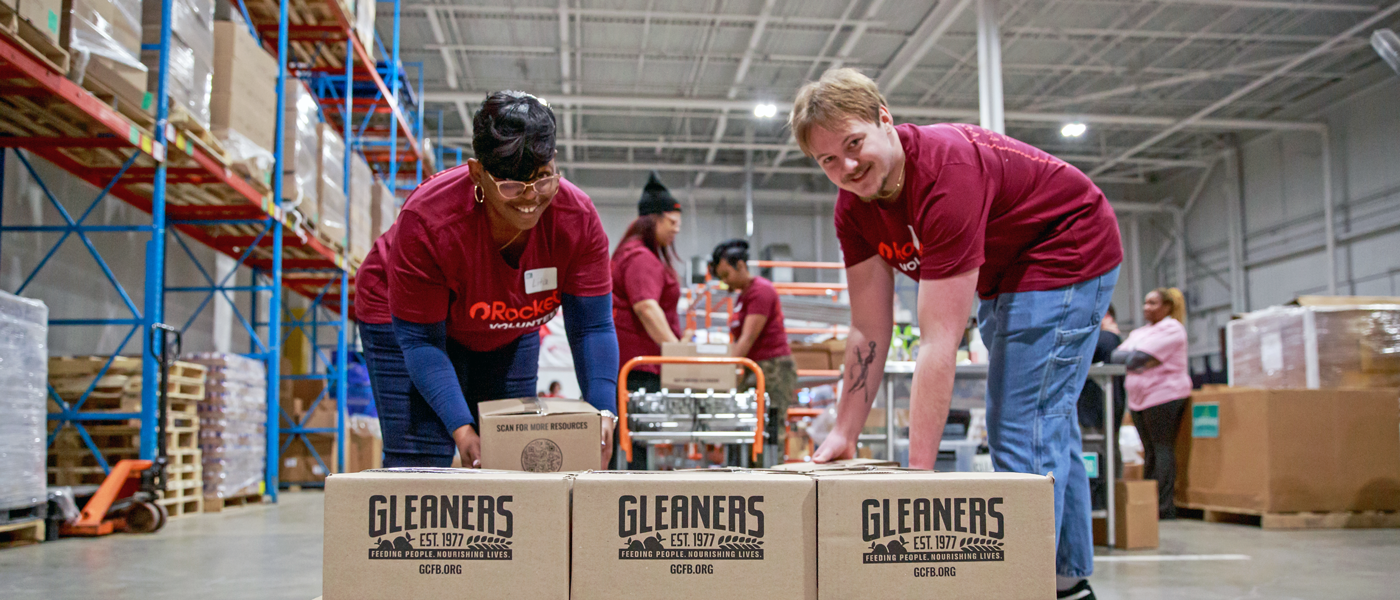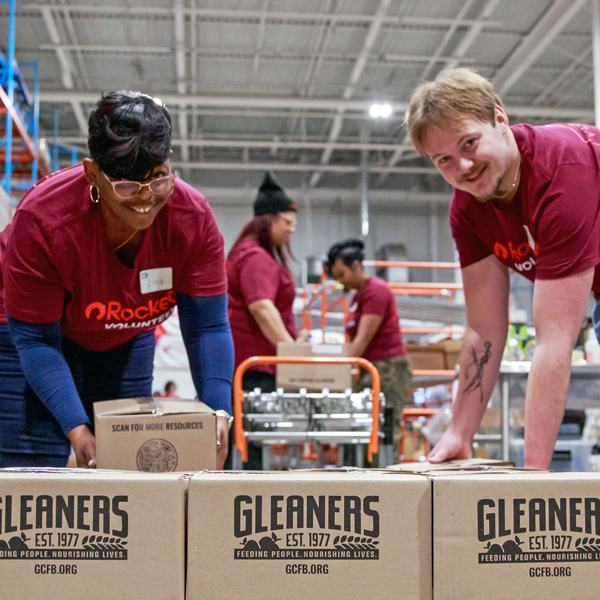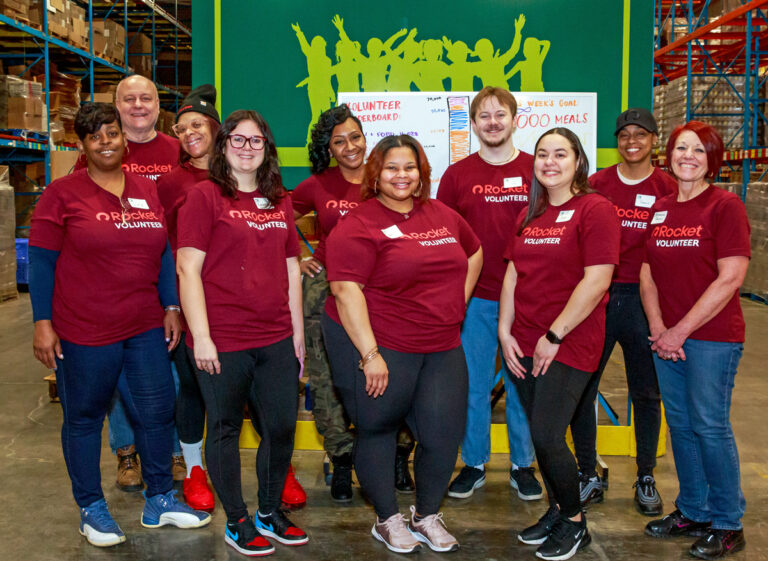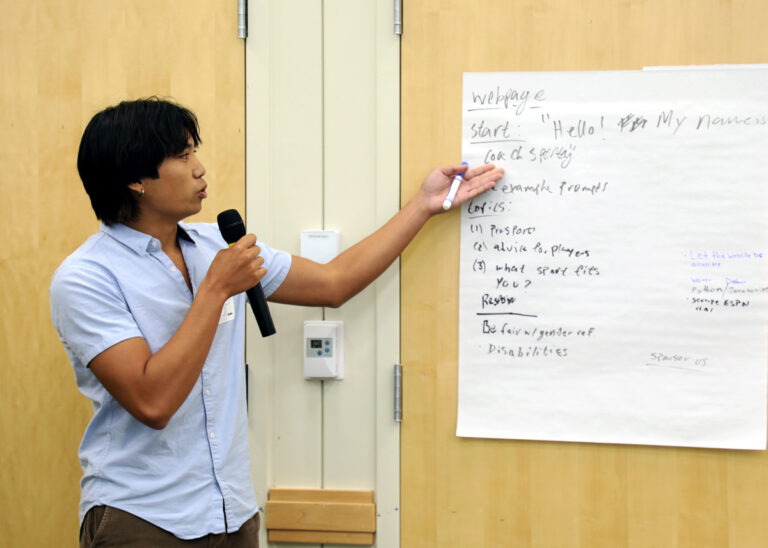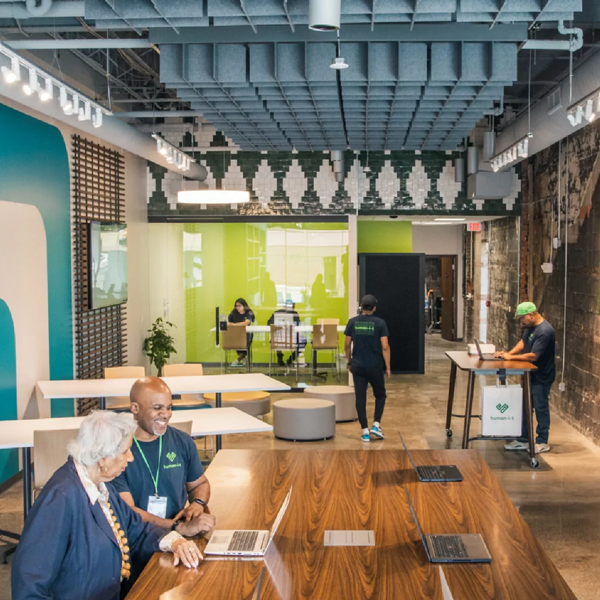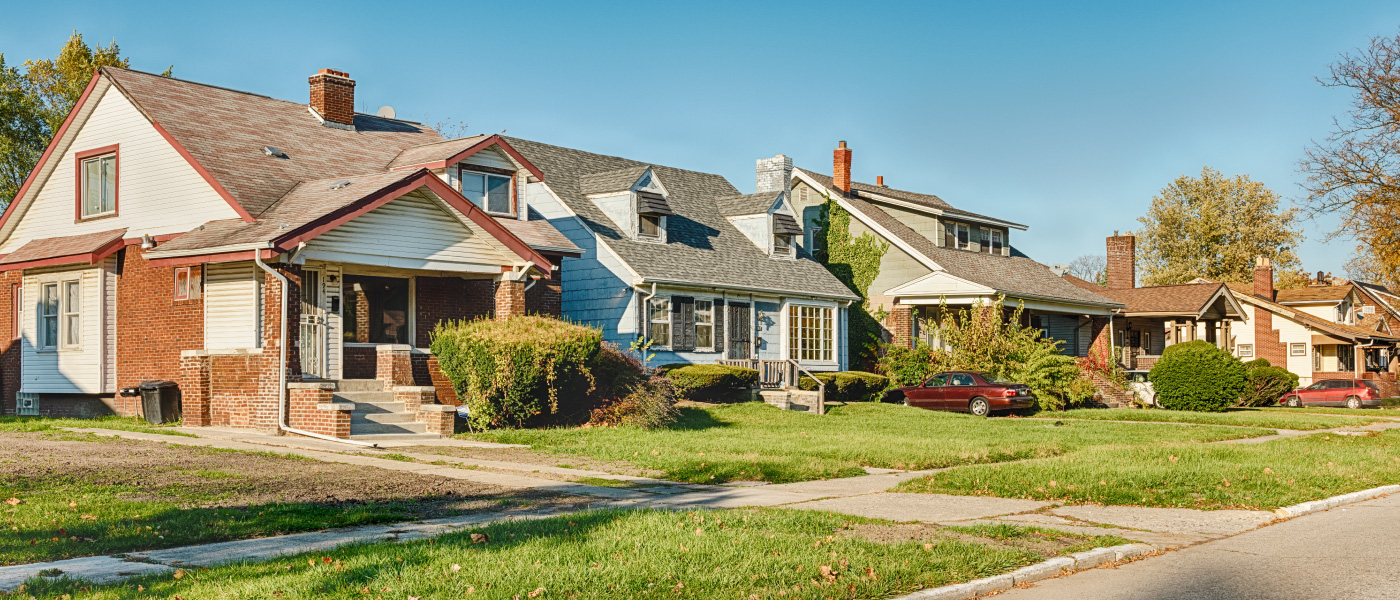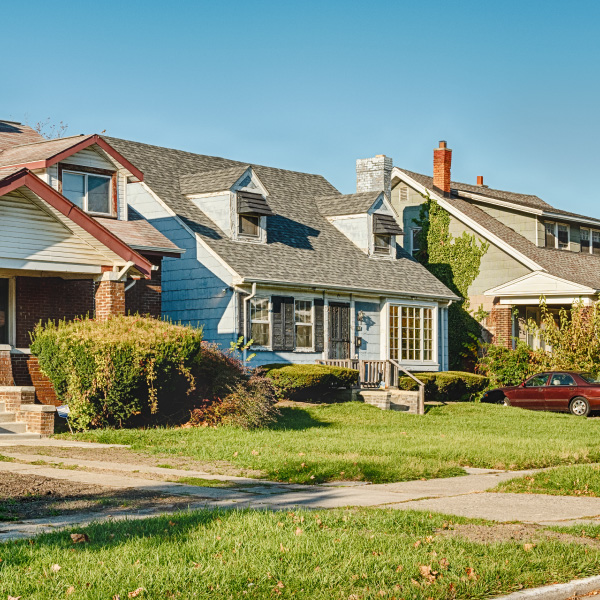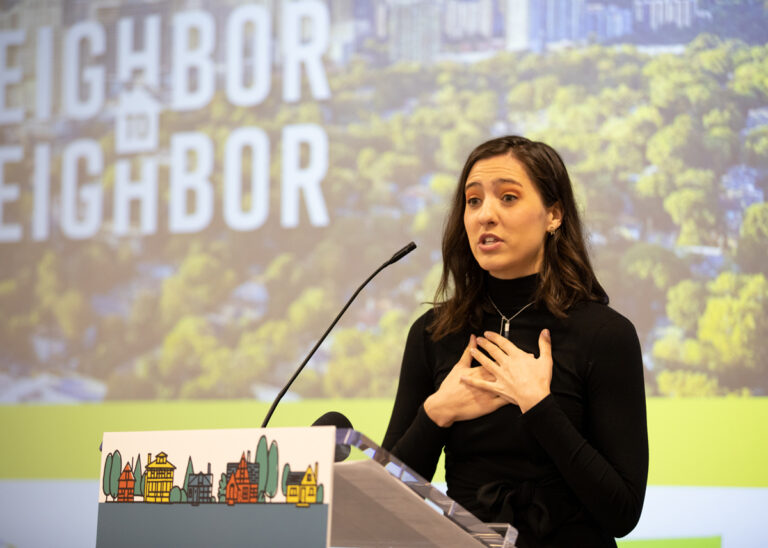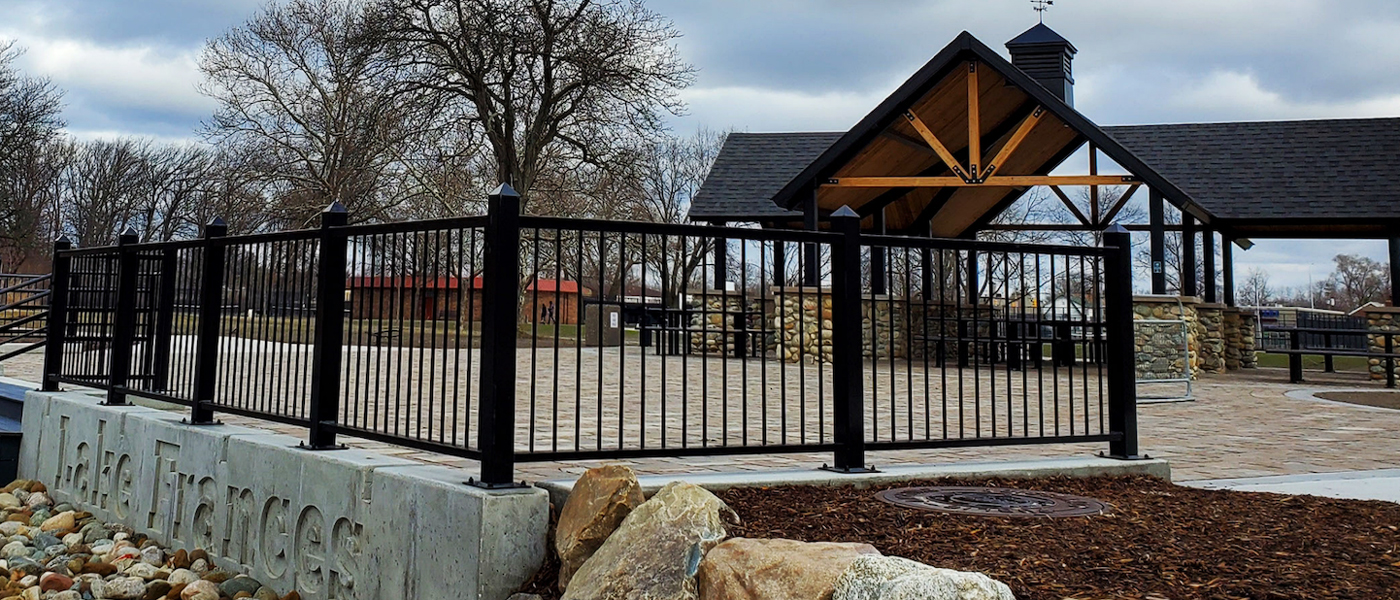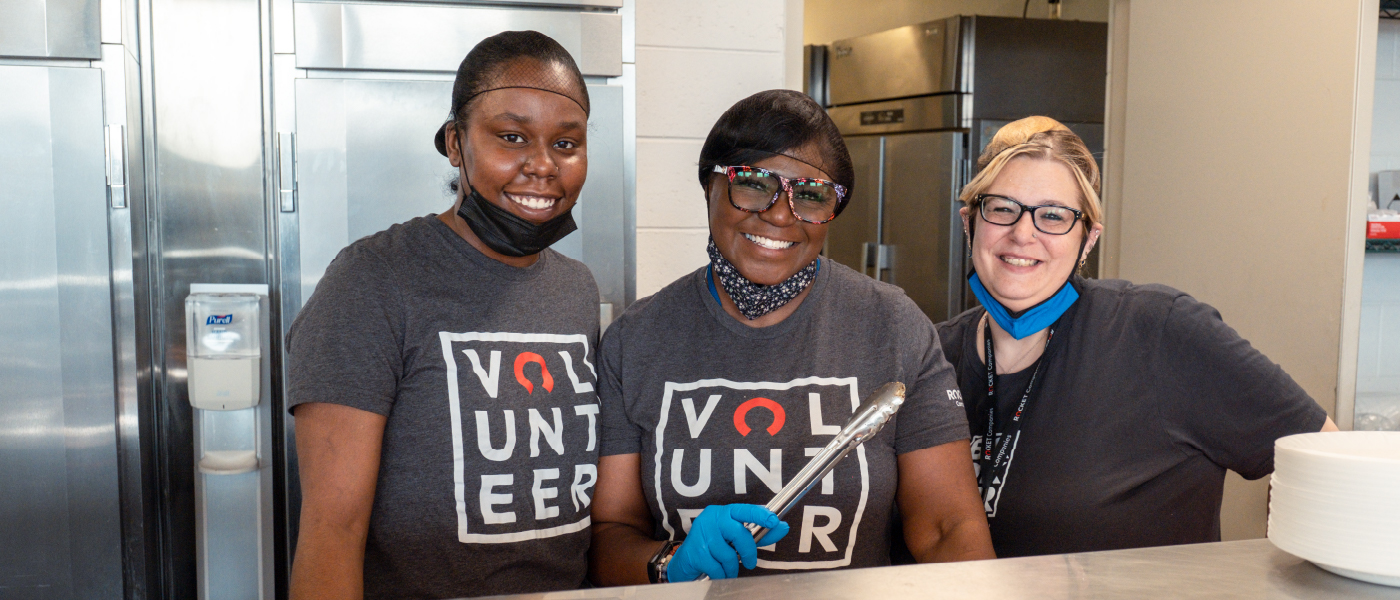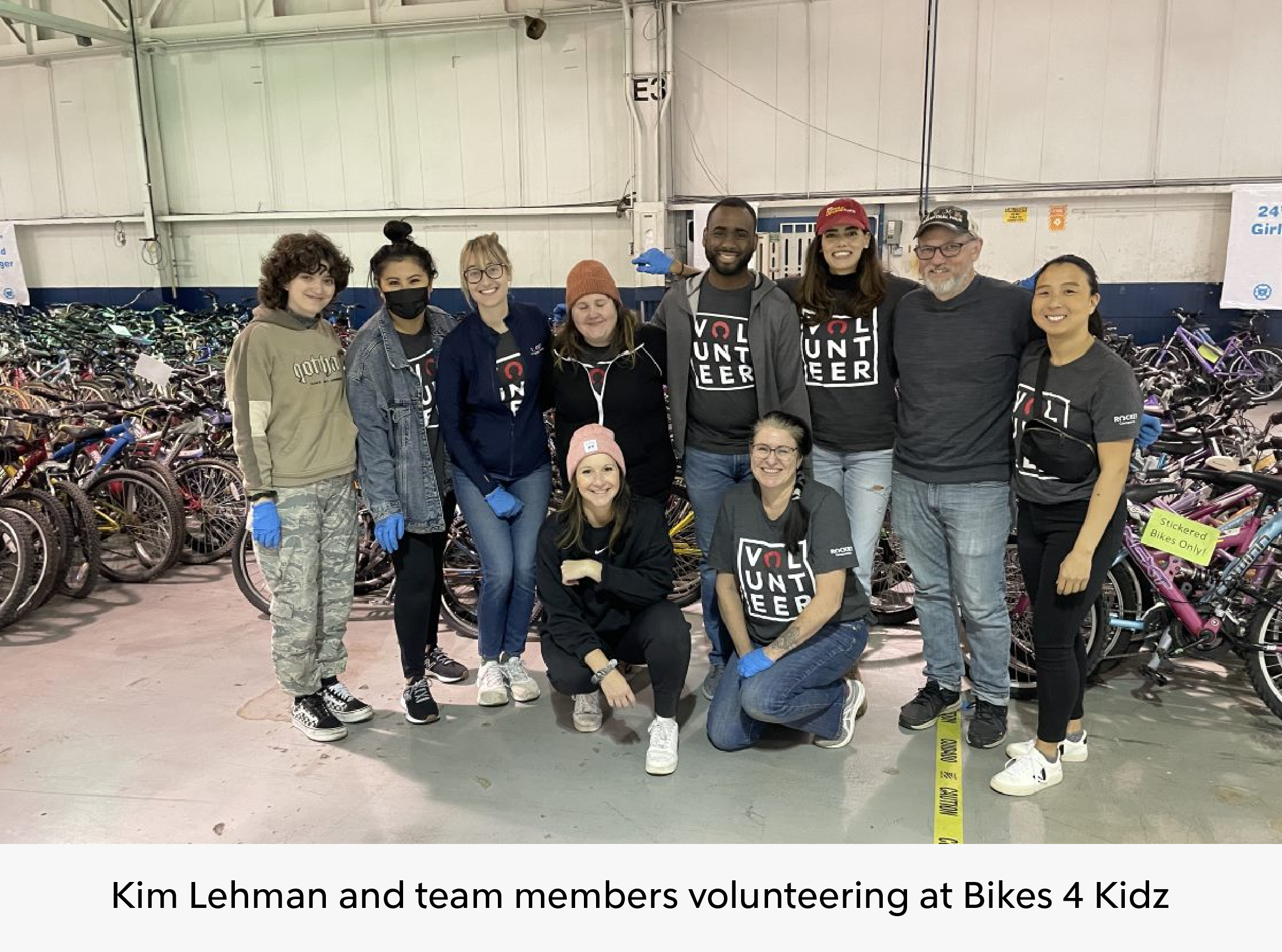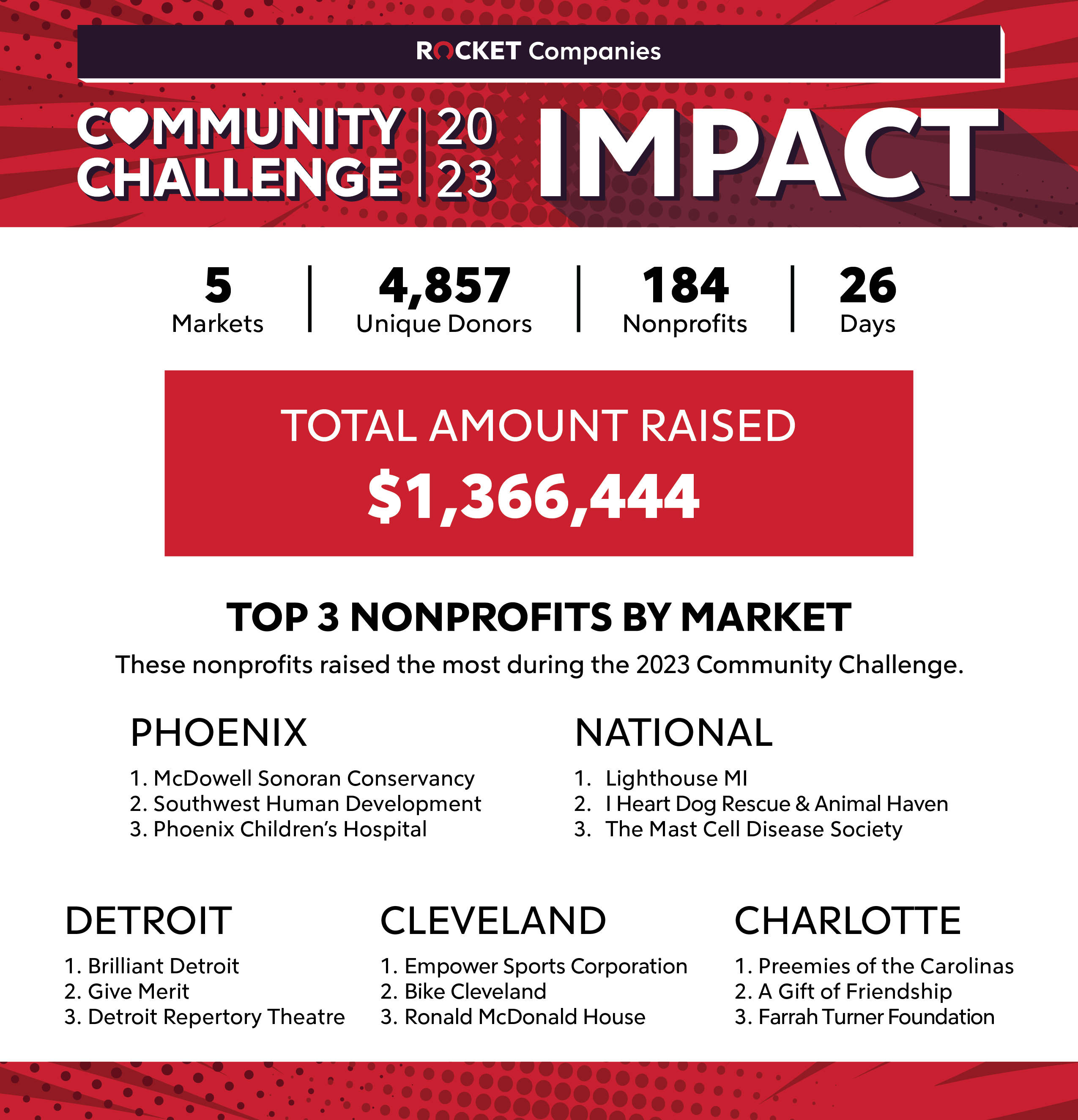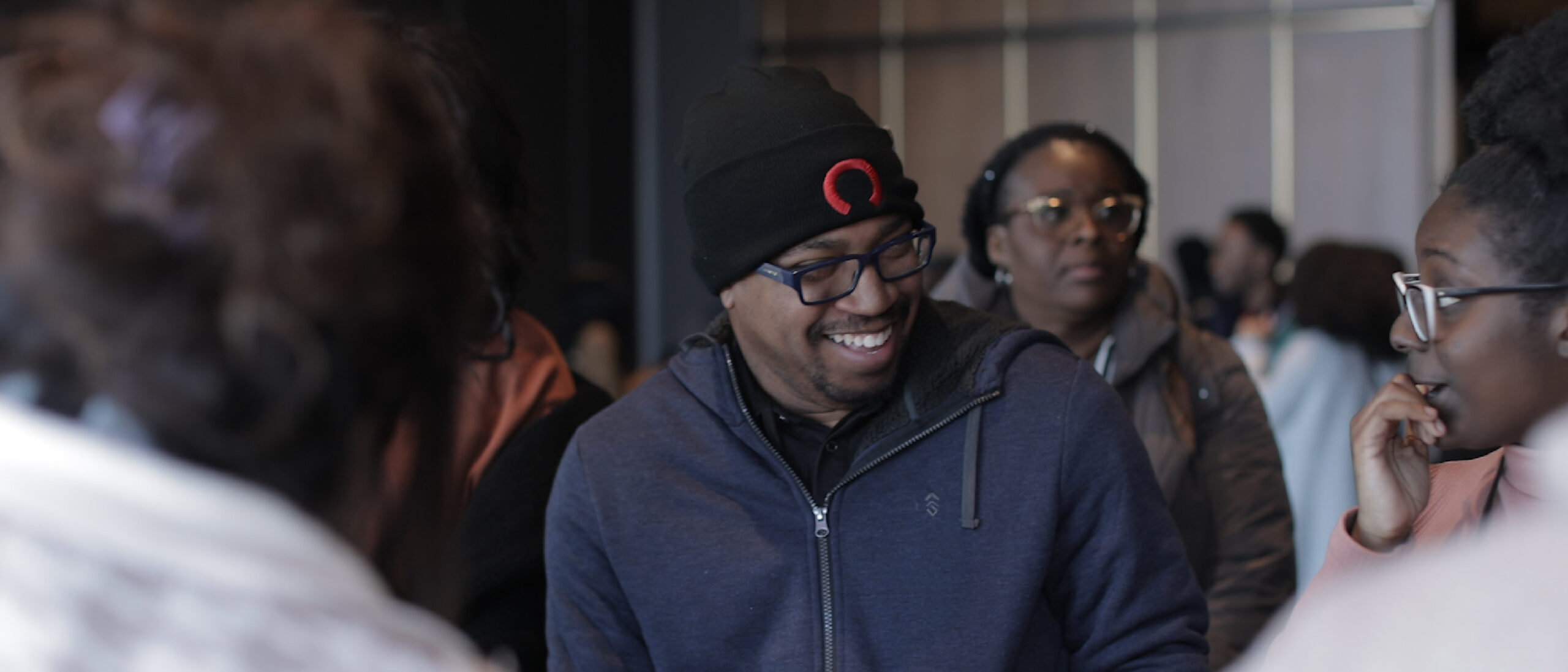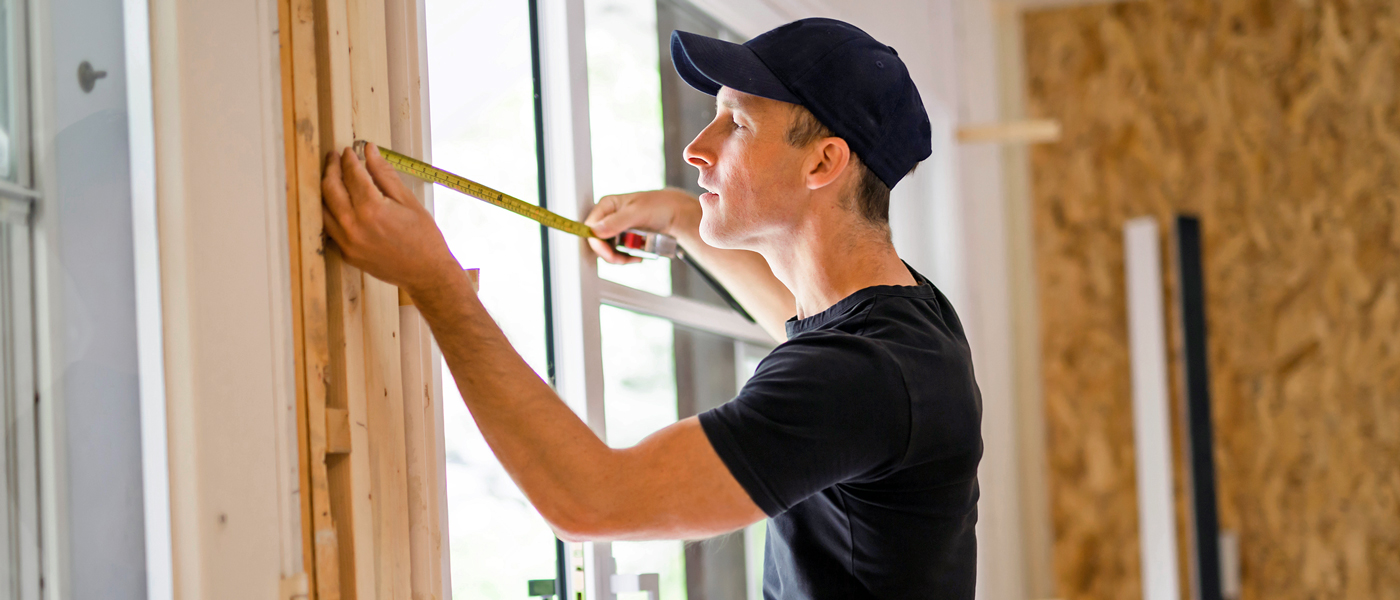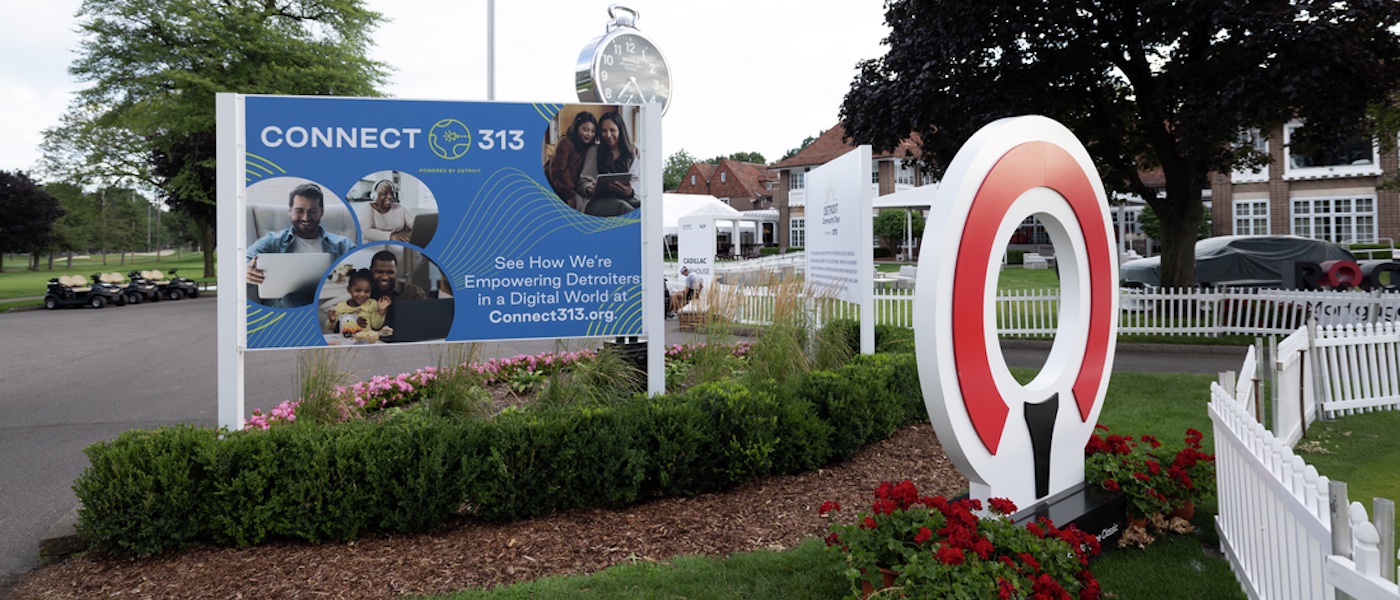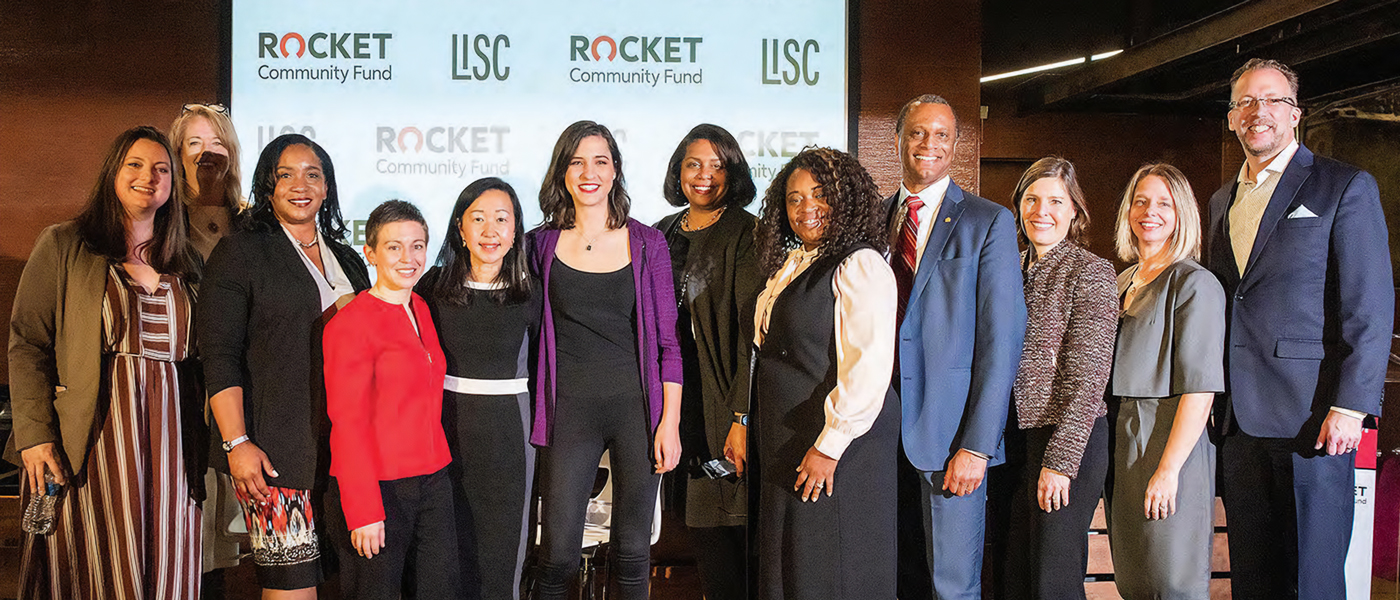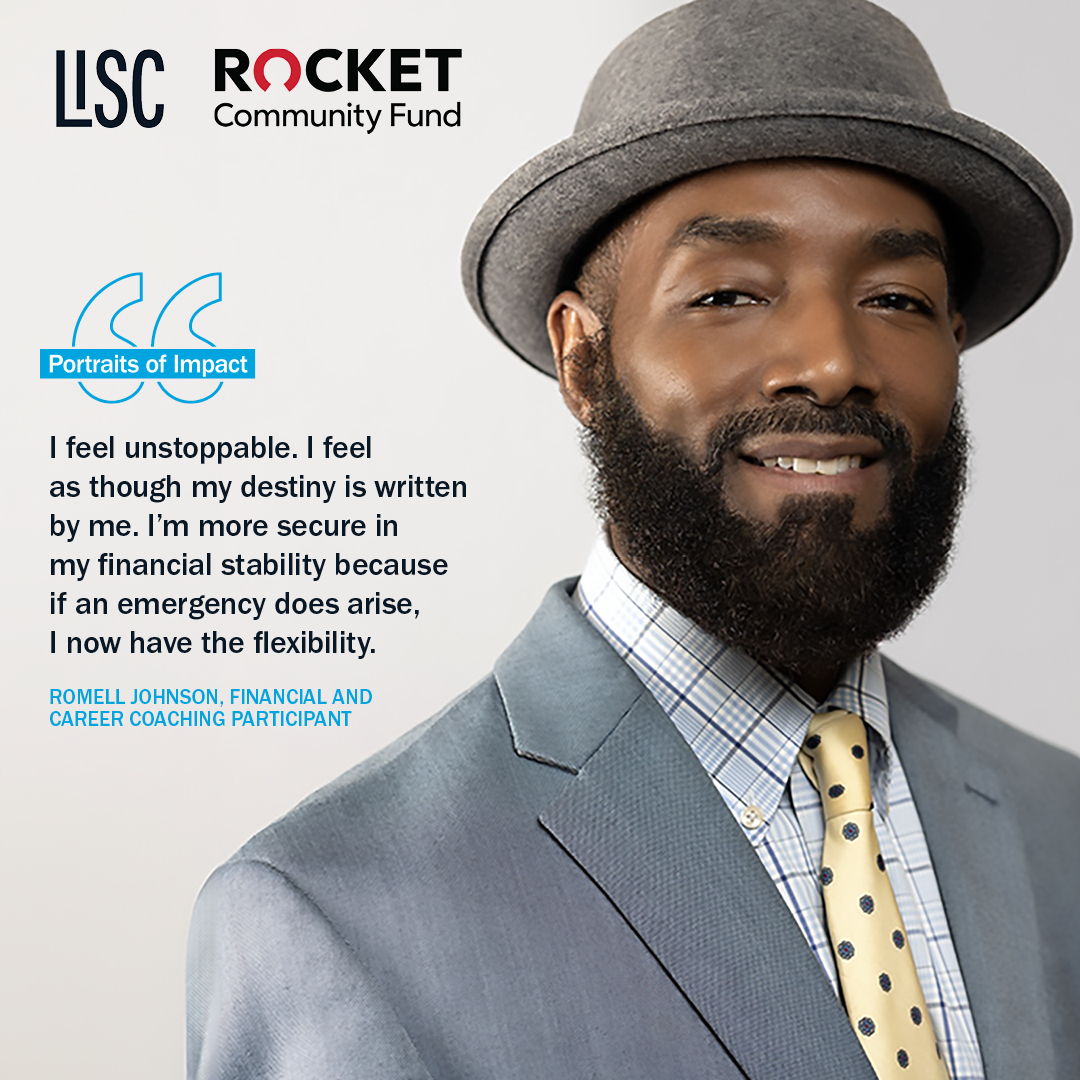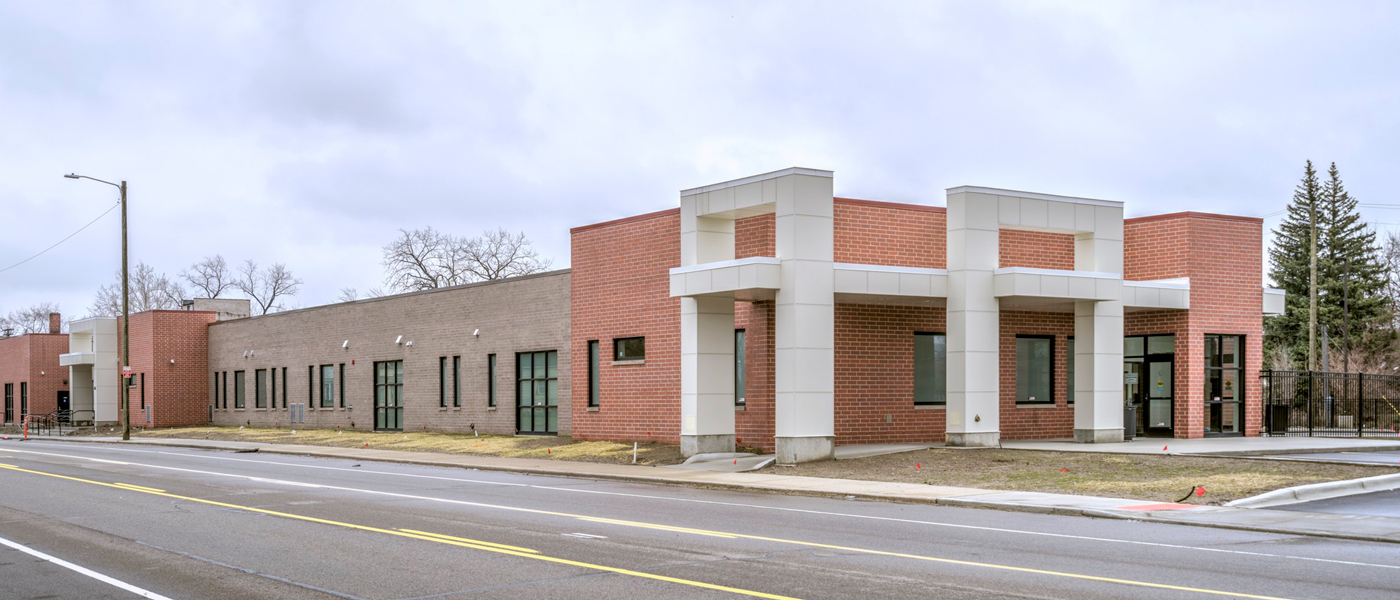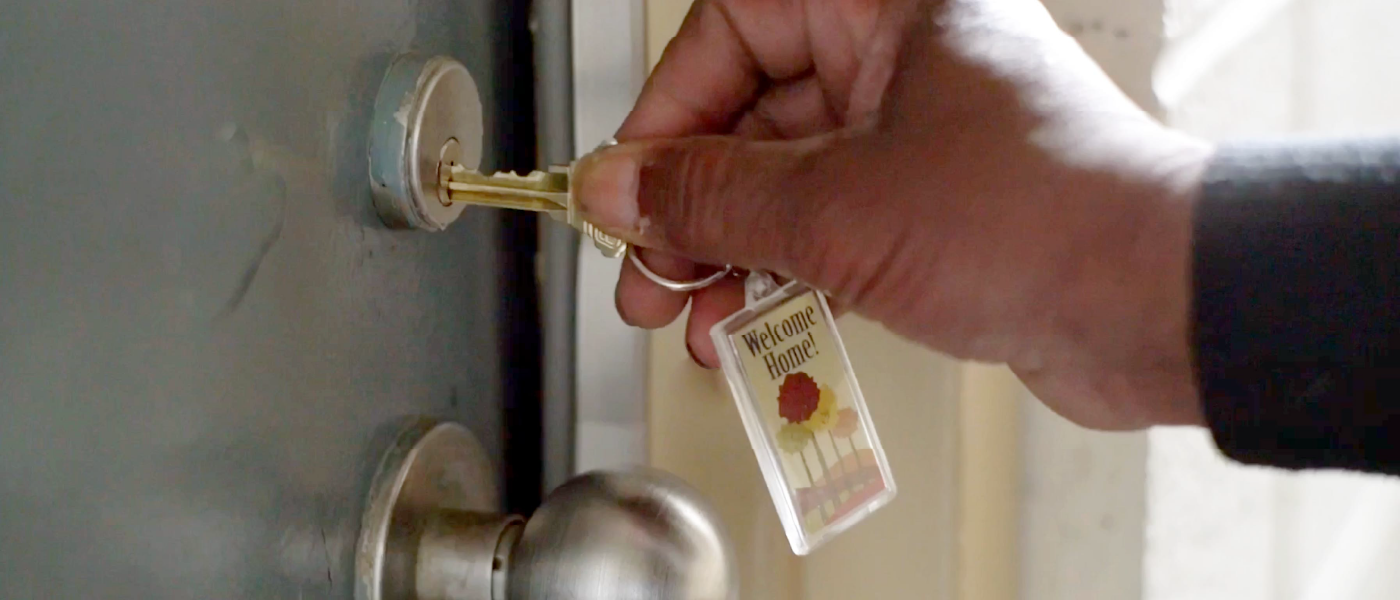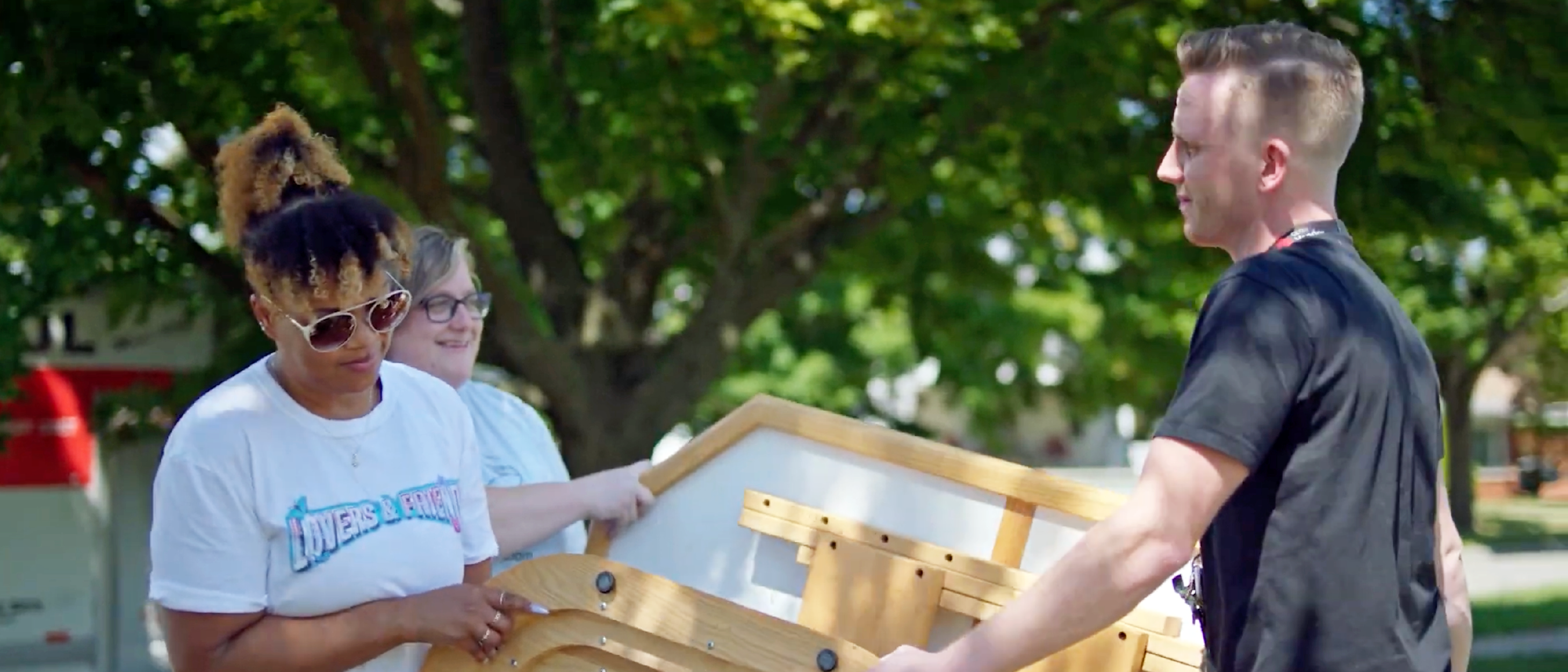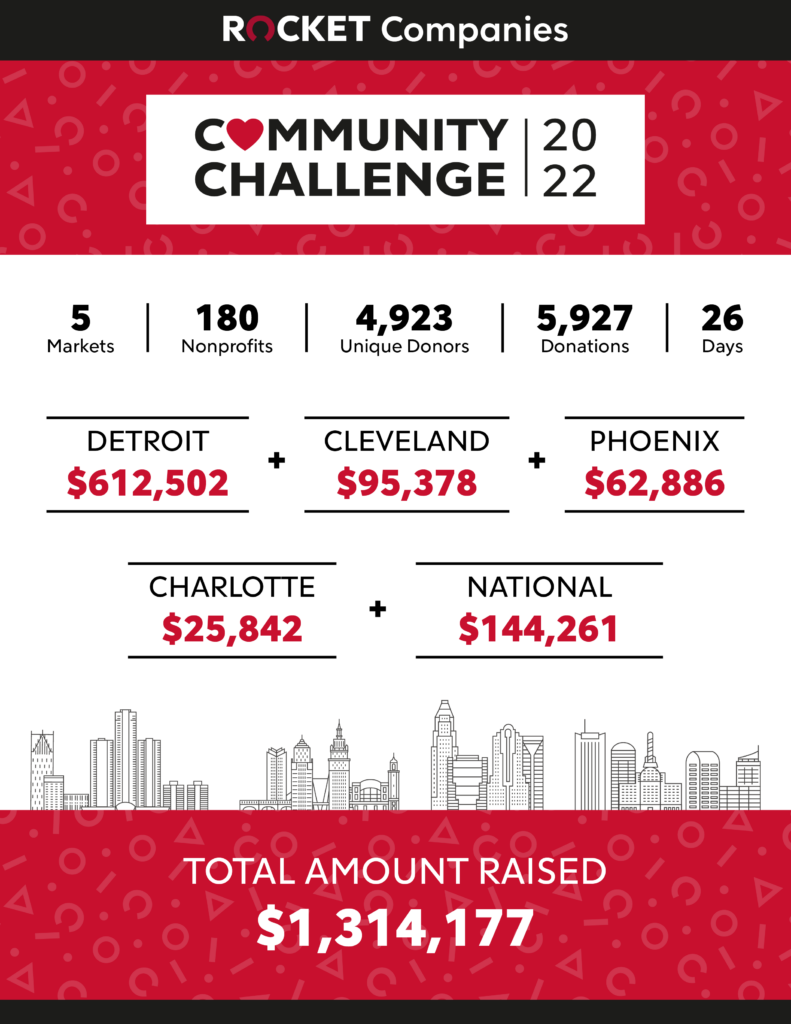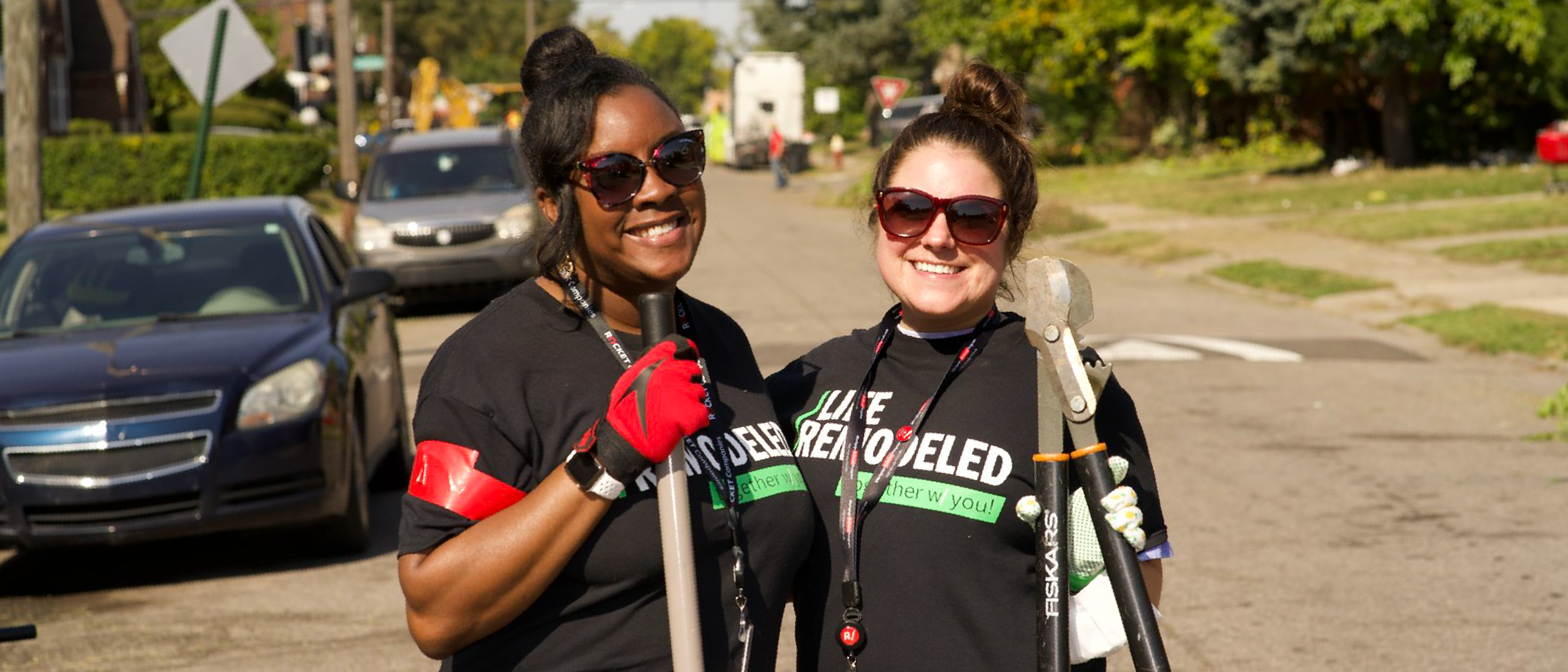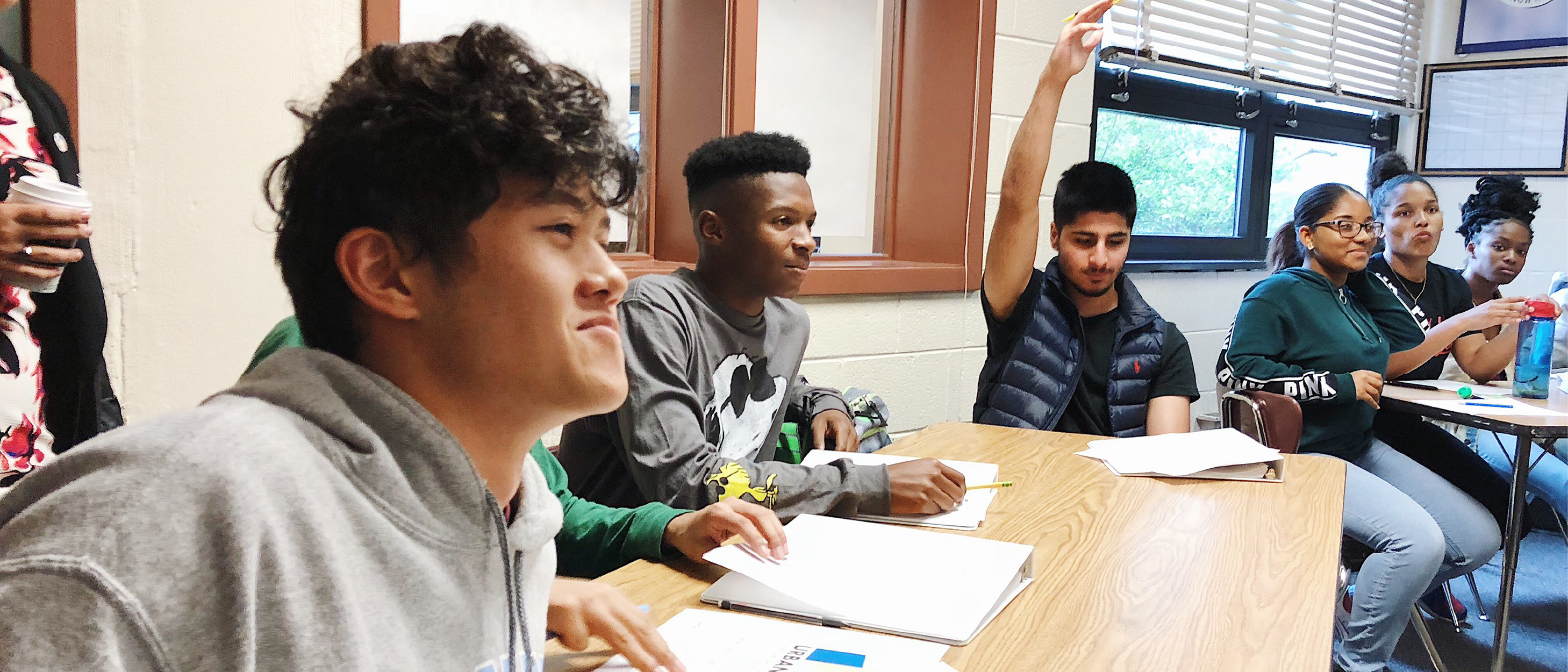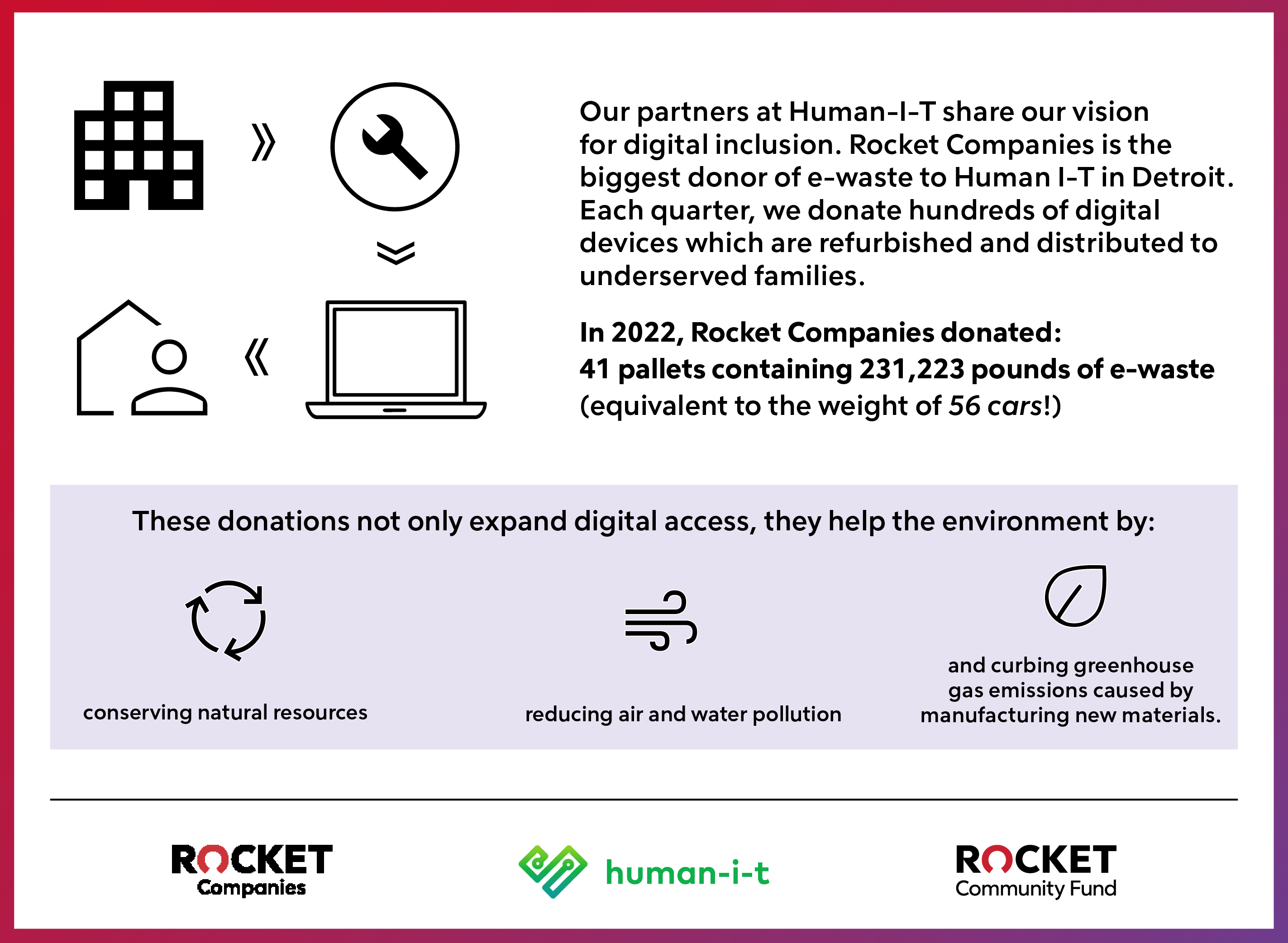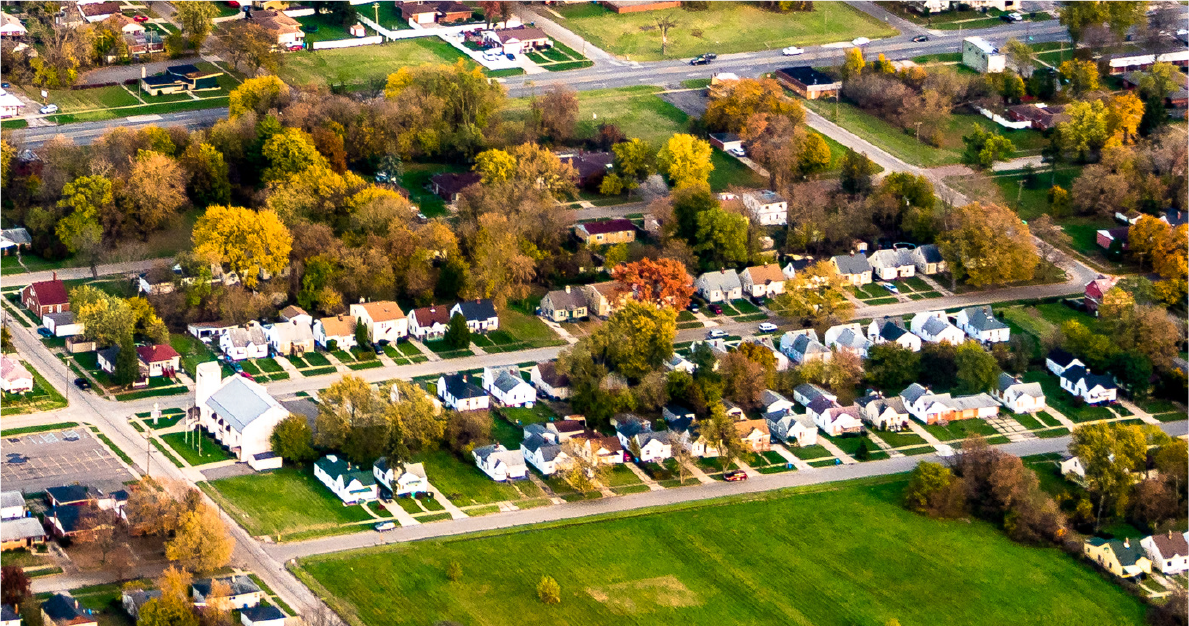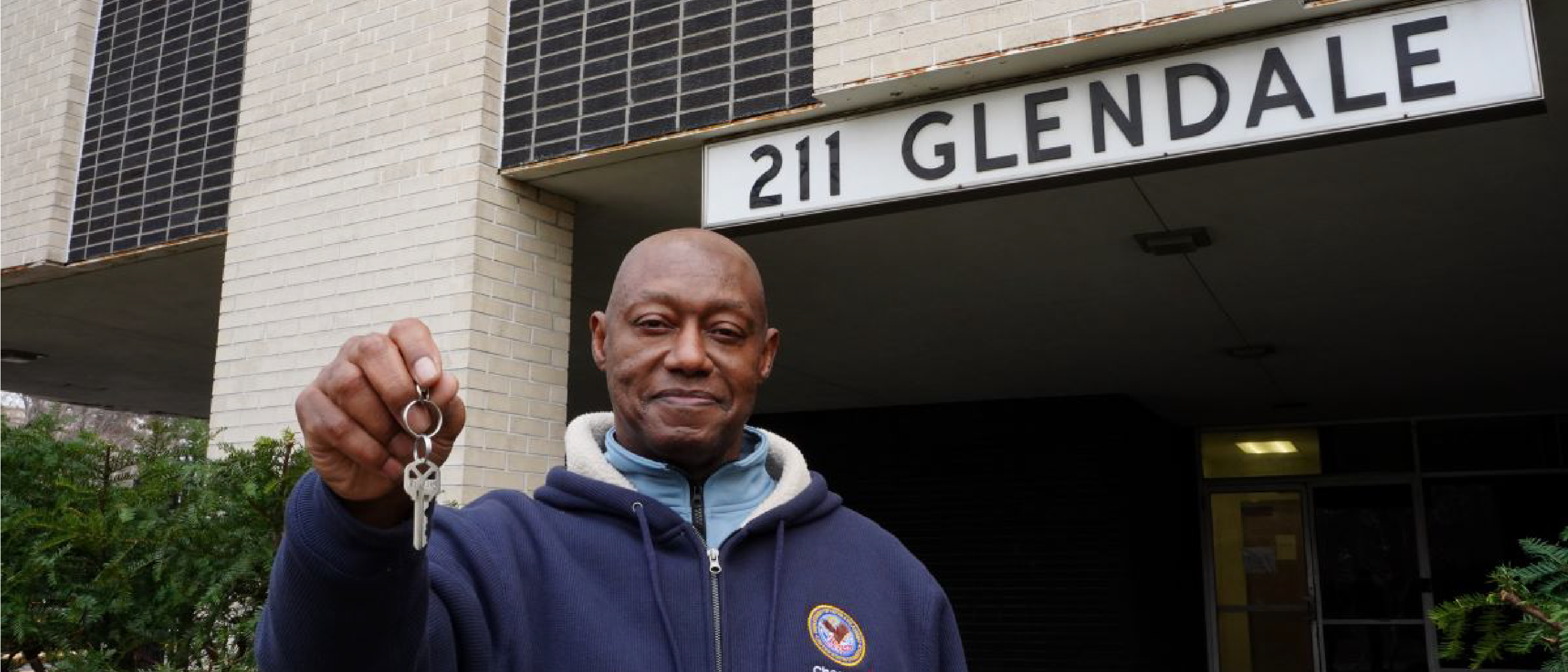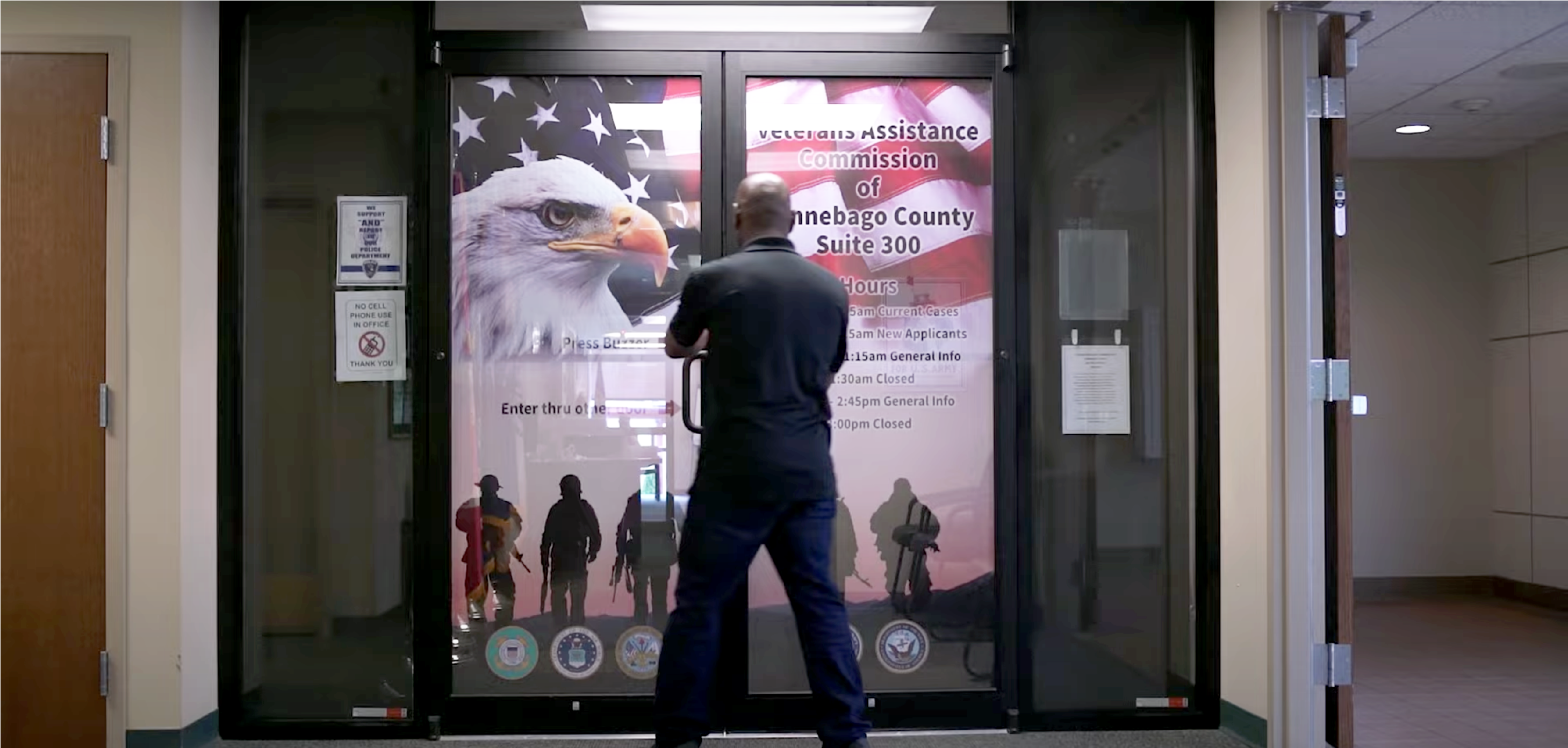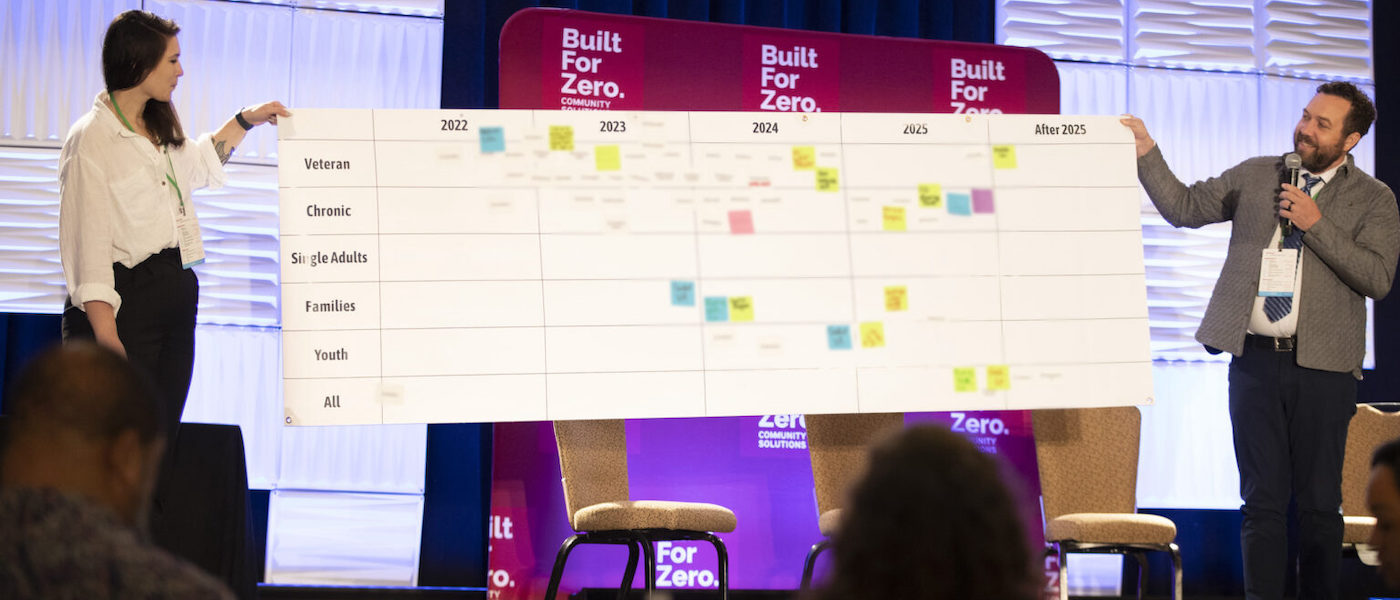In this edition of 5 Questions, we sat down with Gwen Gell, Program Manager for Housing Stability. Gwen talks about how her previous work experience and her background in urban planning and design helped her better understand the complexities of the housing infrastructure, as well as sustainable, environmentally-friendly solutions to repair homes that will last for years to come. Check out the interview to learn more from Gwen’s perspective, and discover why she has a thing for clouds. (Yes, clouds!)
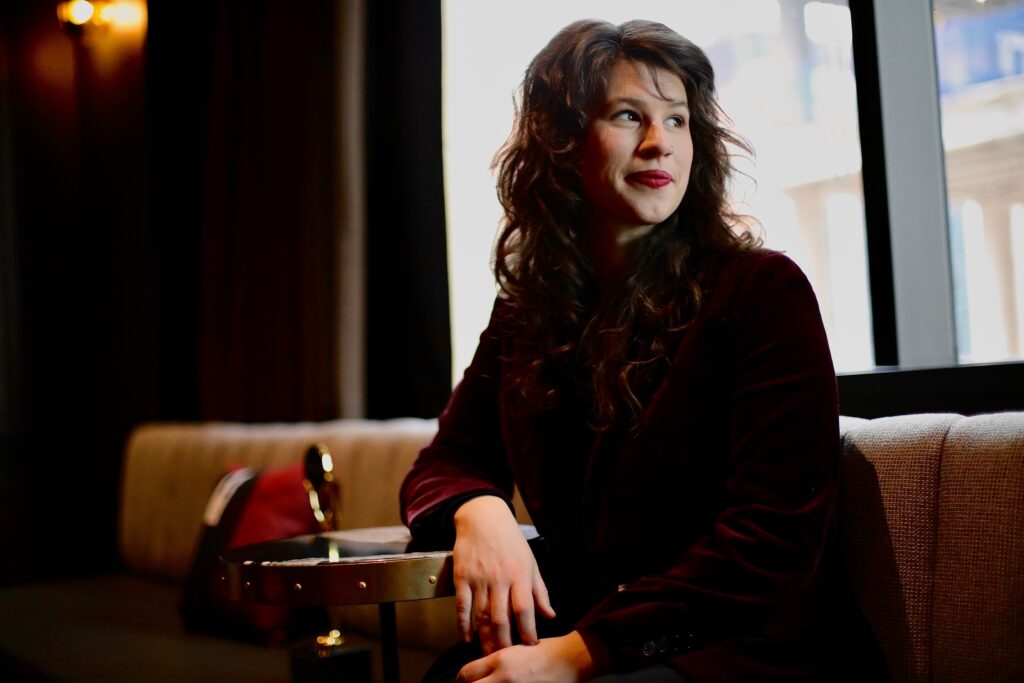
Rocket Community Fund: What made you decide to get into housing work?
GG: Nearly 10 years ago, I was at a Farmer’s Market arranging collard greens and kale when a resident approached me and asked, “Where can I get a roof?” I didn’t know the answer.
It would take me years to learn there is no simple answer to this multifaceted problem. My curiosity drove me to seek answers which led to more questions: Why is the housing stock in a majority Black city with high homeownership rates deteriorating while surrounding communities have access to resources to repair their homes? Why do vacant homes exist when we are in a national housing crisis? What leadership decisions, business practices, and policies have resulted in the housing struggles people face today? I became obsessed with the social, racial, sustainability, and human rights of housing.
Intent on finding answers, I volunteered to assist Detroit residents with completing MSHDA Step Forward applications – a state-level program that assisted homeowners with property tax debt. Sitting across the table from families looking for a lifeline it became clear that housing instability wasn’t just about policy and documents – it was about people. Housing is a human right, and something needs to change now.
I never thought I would work in housing. But that simple question I was asked a decade ago turned out to be the first breadcrumb leading me down a path focused on finding meaningful solutions to a complex and critical issue.
RCF: How has your previous experience as a Home Repair Coordinator for UCHC influenced your perspective on home repair?
GG: My work at United Community Housing Coalition (UCHC) has had a tremendous influence on my perspective. A core part of their mission is to help low-income residents stay in their homes, and I found myself surrounded by experts who have been doing housing work for nearly 30 years. My colleagues knew how to use legal and programmatic tools to advocate and stabilize housing for low-income Detroit residents. While at UCHC, I counseled residents, walked through their homes, coordinated funding resources, and coordinated contractors. It’s difficult to sum up my experience in a few words, but I gained valuable insight into the factors causing housing instability and the challenges facing Detroit residents. For example, poverty is hidden within Single Family Homes and is difficult to identify and is often a symptom of systems rather than individual resources. Many residents have deferred small repairs, due to lack of access to resources, which makes the repair larger in scope and more expensive over time. Detroit’s housing stock is older and often disqualifies residents from taking advantage of eligible resources. Most homes need at least 3 major home repairs, and no single agency or program can address the massive amount of home repair need at scale.
This experience is a huge influence the Detroit Home Repair Fund and my approach to housing stability work.
RCF: You have a degree in Urban Planning and Urban Design. Has this focus had an impact on your approach to housing stability?
GG: Urban planning encourages systems thinking by analyzing how things work, or don’t work, together, for example, housing intersects with transportation, economic mobility, and opportunity. Understanding these systems gave me the tools to think through policies today and identify the problems that need urgent solutions. I also gained a deeper understanding of the historical context of housing instability – red lining, block busting, restrictive convenience, and more – which remained imprinted on our city long after the passing of the Fair Housing Act.
Urban design, on the other hand, imagines the future we wish to live. My urban design education primarily focused on the public infrastructure and the commons, with this lens, I began to look at housing as infrastructure and a common, rather than a commodity. Applied to housing, I often ask, most of our homes will still be standing in 100+ years, who will be living in those homes in 100 years? What will their world look like? What actions do we take today to ensure that future is resilient and full of opportunity to live a joyful life? How do we creatively present that information to inspire that future?
RCF: We know you’re passionate about environmentalism. Can you talk about the intersection between housing stability and sustainability?
GG: Absolutely! Our homes are our largest contribution, as individuals, to our environmental footprint.
Energy efficiency is probably the most associated with housing and sustainability. Insulation, light bulbs, windows, high-efficiency appliances, all contribute to using less fossil fuel to power and heat our homes. To that end, the Detroit Home Repair Fund has partnered with the DTE Energy Efficiency Assistance Program to provide energy efficient items while addressing also underlying repairs which would disqualify a household from receiving energy efficient upgrades, such as asbestos abatement or a roof replacement.
Materials Matter! Environmental sustainability is not just about using less to power our homes, it’s also about using materials that last long and have a smaller footprint. For example, a typical roof in Michigan is built using asphalt shingles, a material derived from oil, and typically lasts 25 years. When it rains, the shingles leach an oily residue polluting the runoff and ground, so you can’t collect the rainwater use it to water edible plants. By contrast, metal roofs have over twice the lifetime of a shingle roof, lasting 60 – 100 years. They leave a smaller environmental footprint, and the runoff is safe to use in a vegetable garden. Given that an estimated 60,000 roofs in Detroit need replacement, we have prioritized metal as a long-lasting material when replacing roofs through the Detroit Home Repair Fund.
RCF: Word on the street is that you love clouds. Can you say more about that?
GG: I’m so glad you asked! I was recently recommended a book called The Cloudspotters Guide, and it has changed my life. I’ve found myself looking at the sky and celebrating the cloudy days, which, in Michigan is quite often. Taking a moment to look at clouds has been especially fun in the cloudy winter; the sunsets and sunrises are spectacular. The wonderful thing about clouds is that no matter where I am, I can see the sky at some point throughout my day. The clouds are constantly changing, reflecting the atmosphere’s mood. It’s become a way for me to pause throughout my day and take a moment to slow down, step back, and poke my head in the clouds.


